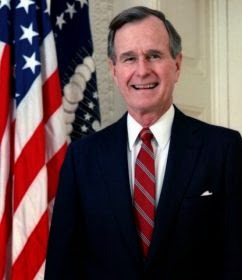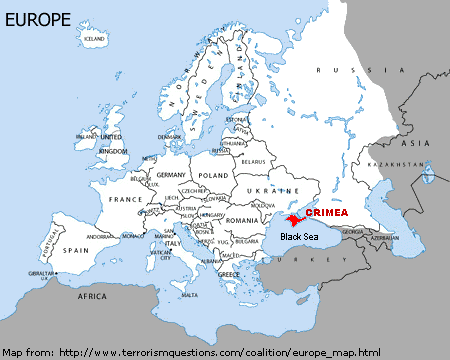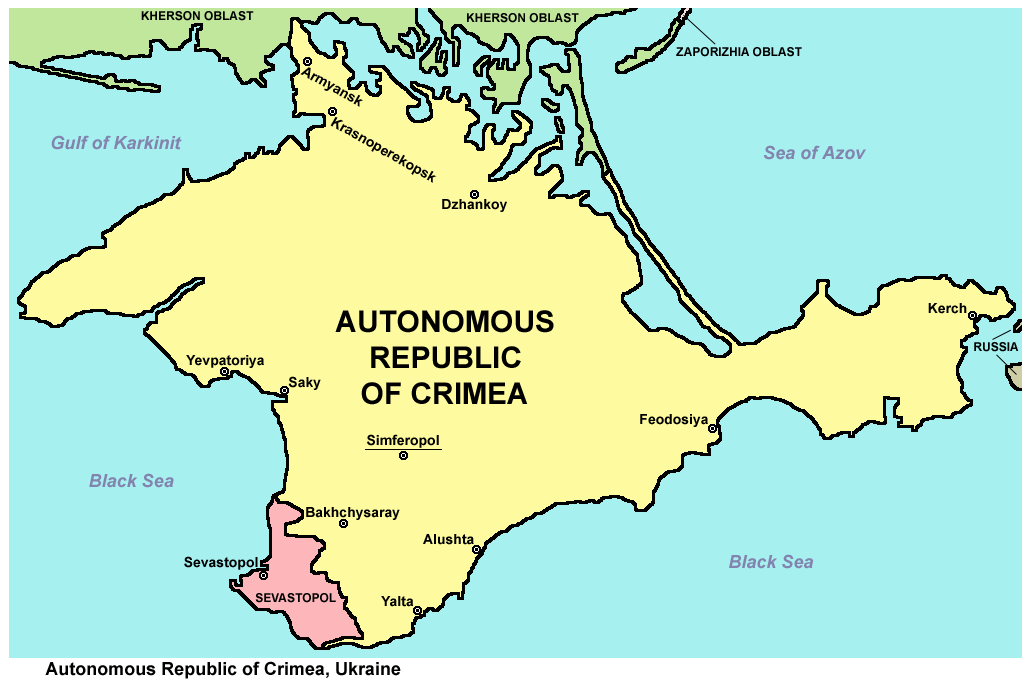Ukraine is a country to the west of Russia that borders the Black Sea to the south and Belarus to the north. At the moment, Ukraine is receiving incredible amounts of attention from foreign media news sources because of its recent uprising and the even more recent belligerency against the Russians in what appears to be mounting into a full scale invasion of Ukraine on behalf of the Russians.
How did Ukraine get to where it is now? And, more importantly, how does it connect with United States history?
The modern "nation-state" is a west-European creation that, for most of the history of the world, has been a very locally contained phenomenon in the upper western geography of Europe. Roughly starting with the consolidation of France (in the late 1400's and early 1500's under the rule of the Valois and Bourbon dynasties) and the unification of Britain after the British Civil War, "state-hood" was a loosely defined word that carried little to no meaning in the rest of the world, especially in eastern Europe.
From the fall of the Romans to the rise of the Mongols, eastern Europe was a collection of Germanic and barbaric tribes that battled for loosely defined nets of territory. Before the Mongols swept across Asia and the eastern part of the Caucuses, the Kievan Rus (centered in Kiev - the current capital of Ukraine) became the most powerful and influential confederation in Europe. (
I made a video on Russian history for MEHAP last year which explains this all in more detail)
The Kievan Rus had very loose borders, unlike its contemporaries in the west. This stems from cultural differences, but also from the fact that the Kievan Rus' power was somewhat uncontested on its eastern sides and its immediate western borders. When the Mongols came into Europe, the Kievan Rus was completely destroyed and was fragmented into separate duchies and kingdoms. In the end, most of the area around Kiev became part of Galicia, while large parts of the Kievan Rus were divided among the Duchy of Moscow (which would soon become Russia) and the Grand Duchy of Lithuania. This is where the real conflict begins.
From the early 1300's until the late 1600's, "Ukraine" was not a real state. The word "Ukraine" comes from the slavic word
ukraina, which means "border." For a while, this is because the Ukraine region of the Kievan Rus was the southern border of the principalities. By the late 1600's, "the Ukraine" was the region around Kiev and to the Crimea, and it served as a mutual border between the Cossacks, the Russians, the Polish and the Turks. During a period called "The Ruin," the four aforementioned powers duked it out for the Ukrainian region, and the result was a victory for no one and for everyone. From the Ruin came the rise of the Crimean Khanate, which remained independent for another 150 years.
European history buffs know, though, that the Crimean Khanate (or any balance in the Crimean region) could not stand the test of Catherine the Great's rapidly expanding empire. In 1774, two years before the American Declaration of Independence, Catherine the Great overtook the Crimean Khanate, as well as a huge chunk of the western Ukrainian region.
Then, a ton of other stuff happened, but the main thing to focus on thus far is this: the Kievan Rus was primarily slavic, and when the Kievan Rus fell, the dominant powers over the Ukrainian region were the Russians and the Tatars. The Ukraine then served as a border between four eastern powers and eventually was mostly consumed by the Russians. Essentially, Ukraine has a TON of different nationalities at this point but is held primarily by Russia.
Nearing WWI, huge nationalist waves were crashing on the shores of eastern Europe. Ukrainian nationalists tried to form a true Ukraine, but failed miserably when a powerful Poland and Russia dominated and split the forming nation into three parts: a Polish part in the west, a Ukrainian middle and a Russian east. During WWI and WWII, Ukraine suffered multiple invasions and vicious population loss. By 1945, though, Ukraine had won its highly desired statehood, and it became the Ukrainian Soviet Socialist Republic. Following brutal treatment from Stalin in a series of ethnic-cleansing efforts to rid the Ukraine of the Tatars and the Turks, Khrushchev desired amiable relations with the Ukrainian SSR and the Russian SFSR. In showing his alliance and trust in the Ukrainian nation, he gave the Crimea, a region of Russia since Catherine the Great's reign, to the Ukraine in 1954.
This is where things start to get ugly.
 |
This photo shows the ethnic groups in Ukraine. Crimea is
primarily Russian, as well as some of the eastern parts of Ukraine. |
As you may be able to guess, the Crimea, although now officially Ukrainian, had huge amounts of Russians. When the Soviet Union fell in 1991, there were huge movements in the Crimea for an independence movement that would free the Crimea from Ukraine and give it to Russia. This movement was swiftly crushed.
Flash-forward to 2013 when a huge revolution erupts in Ukraine. This is where Cold War politics come into play. The government at the time of the start of the revolution was very much a remnant of Soviet dominance. Because Ukraine was part of the Soviet Union, it was not part of any of the European trading commissions that rose from NATO, notably, Ukraine was not invited to the European Union. In 2013, when Ukraine was close to gaining a spot in the European Union, the Russian peoples in the government and in Ukraine voted against entry into the European Union, which sparked violent protest by the Western-thinking youth generation.
During this period of instability, international powers considered sending troops to Ukraine to make sure the revolution didn't erupt into anything worse. The only one to follow through, though, was the Russian Federation, today, March 1st, which, according to some accounts, as already landed troops in the Crimea.
Now, let's tie this back to US History. The conflict in Ukraine is a result of Cold War politics and history. Putin still considers the Crimea to be a Russian possession. But, we can also see a battle between east and west, between US influence and Russian influence. The government in place in Ukraine was a left-leaning Soviet remnant that kept itself out of a coalition of European nations, the European Union, whose origin is in NATO and thus very American. When a revolution broke out in favor of joining the European Union, waves of pro-Western thought rumbled in the foundations of the current Ukrainian government, and Moscow responded with military action, hoping to rope a region of particular slavic majority (the Crimea) into the Russian Federation to keep it out of the European Union and out of the hands of the West.
The Ukrainian crisis is an example of lasting Cold War conflicts that have yet to be resolved. Only time will tell if Ukraine will become a battle-ground for another cold conflict, or if it will die down... or if it will erupt into World War III.







.JPG)

